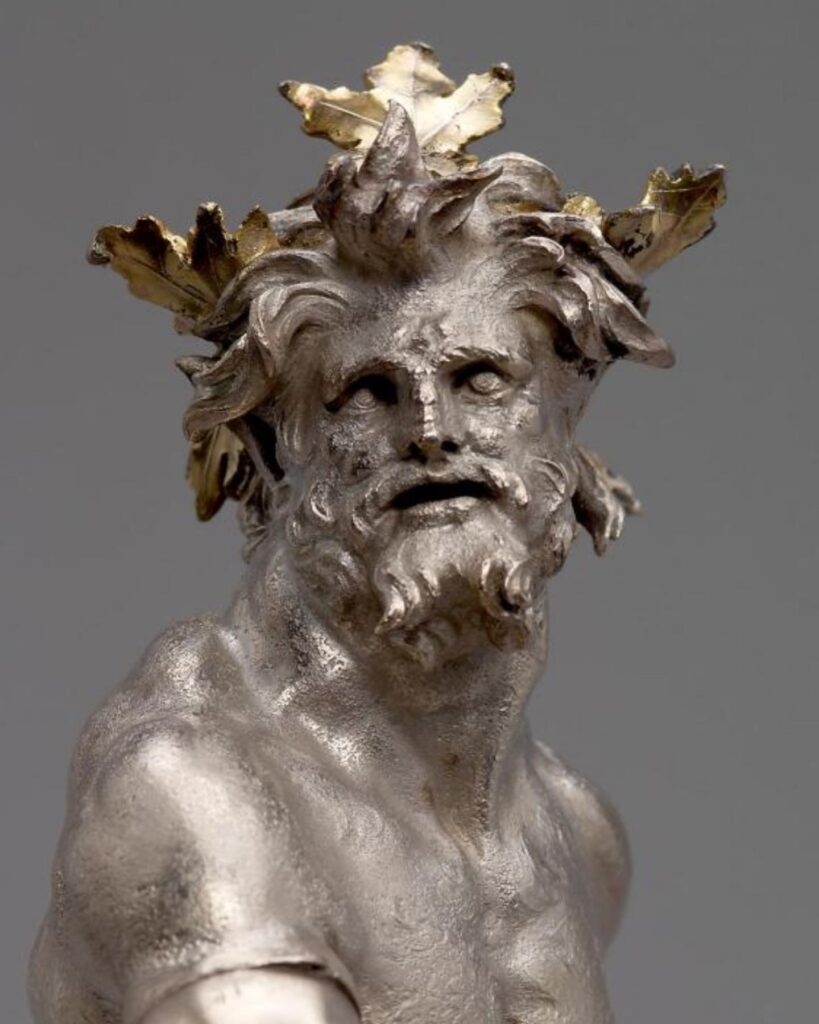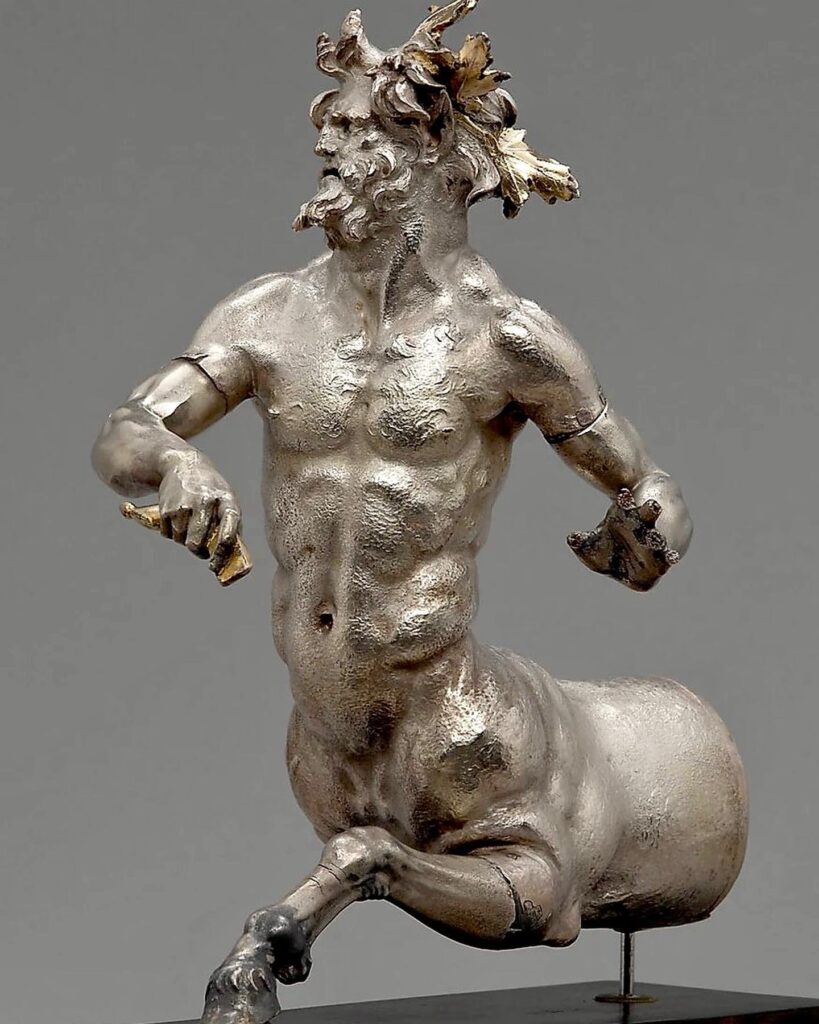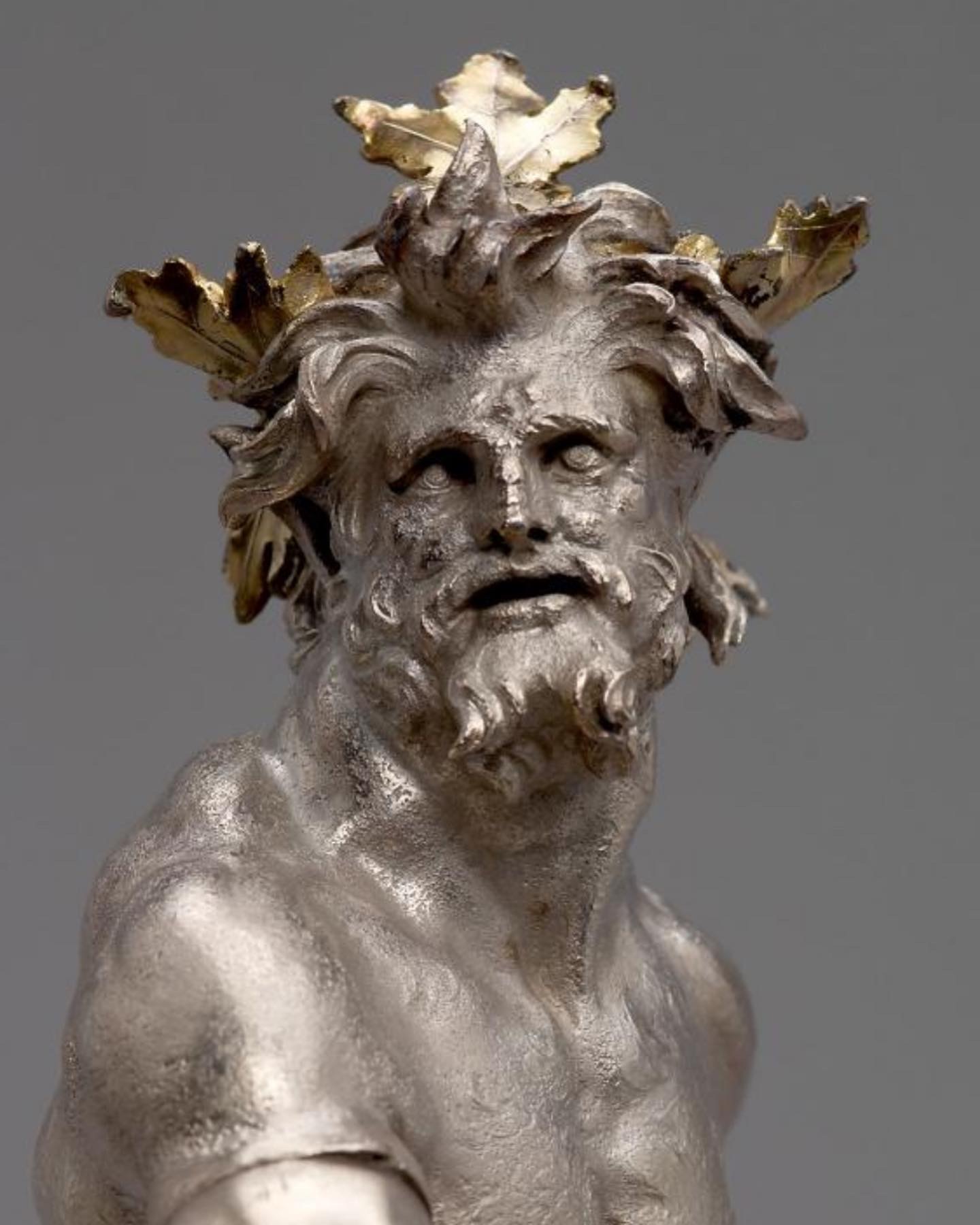Magnificent in every way, this centaur is full of exquisite mid-Hellenistic craftsmanship. When Alexander’s successors came westward to roost, they brought back precious metals and some most peculiar Persian aristocratic modes of drinking.
Just look at this fellow, full of pathos and glower (face shown better in the second photo). His festive gilded wreath places him in party mode even if his expression belies that somewhat. He was made in repoussé from a single silver sheet, apart from those separately attached powerful arms and likely of Seleucid craftsmanship. Found in a cache of silver vessels in Falerii Novi in 1810 the centaur now resides in the Vienna Kunsthistorisches Museum, and is worth a visit.


He was functional, made as a rhyton (much of the funnel-like back section has been lost) the most diabolically difficult vessel from which to drink wine. It would have been held aloft (by a dexterous arm or more likely a hapless servant) and timing must have been essential, as an unrelenting parabolic stream of dark wine would emerged from a hole (in this case apparently near the centaur’s manly nether regions) to reach the skillful drinker’s open and eager mouth. And I have so many questions? Was this a beer-funnel situation? Was the drinker required to drink the entire quantity in one go? Were there disastrous and messy attempts?
You might have spied that golden implement in the centaur’s right hand. Alas, it is not a banana but a plektron. He is a distinguished musical specimen of his species, and would have strummed a now missing kithara cradled in his other arm, offering musical inspiration and copious wine to members of this charmed symposium.




